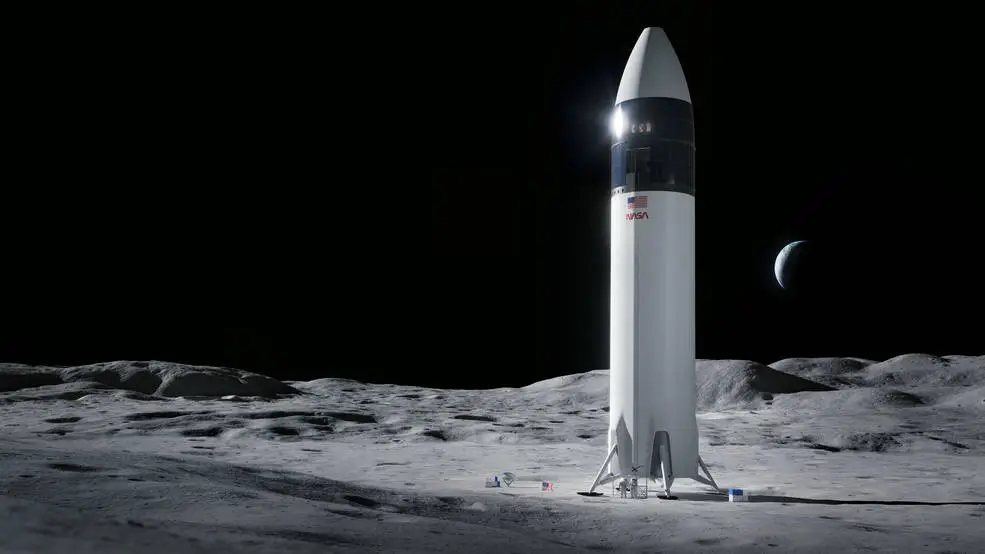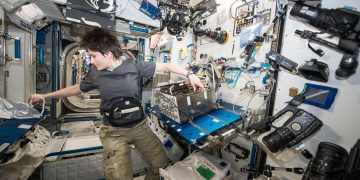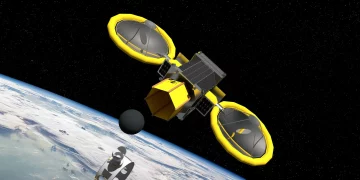Introduction
Human exploration of the Moon has a long and storied history, with landmark achievements such as the Apollo 11 mission in 1969 marking the first time humans set foot on another celestial body. However, after the Apollo missions ended, the focus of space exploration shifted, and the Moon, while still significant, faded somewhat into the background. Recently, though, the Moon has once again taken center stage in the conversation about the future of space exploration. Fueled by NASA’s Artemis program and increasing international interest, the Moon is poised to become the next major hub of human exploration.
NASA’s Artemis program is a bold initiative to return astronauts to the lunar surface by 2025, with the goal of establishing a sustainable human presence on the Moon in the coming years. Beyond NASA, other nations, including China, Russia, and various European countries, have also ramped up their lunar exploration efforts. Together, these efforts signal a new era for the Moon—a period of international collaboration, technological challenges, and, potentially, long-term human settlement.
This article explores the future of human exploration on the Moon, examining the NASA Artemis program, technological challenges, international cooperation, and what lies ahead for humanity’s next step in space exploration.
NASA’s Artemis Program
Artemis I and Beyond: A Timeline of NASA’s Upcoming Missions, Including Crewed Missions to the Moon and Establishing a Sustainable Lunar Presence
The Artemis program is at the heart of NASA’s renewed focus on the Moon. Launched in 2017, Artemis aims to return humans to the lunar surface and establish a sustainable presence by the end of the decade. The program has evolved into a centerpiece of the United States’ space exploration efforts, with an ambitious roadmap for the next decade and beyond.
Artemis I, the first uncrewed test flight of NASA’s Space Launch System (SLS) and Orion spacecraft, is set to be the starting point for the program. The mission will send an uncrewed Orion capsule around the Moon, testing the spacecraft and its systems in deep space conditions before human missions begin. Artemis I is a key milestone in developing the infrastructure required for future crewed missions.
Following Artemis I, Artemis II will be the first crewed mission, scheduled for 2024. The crew will be aboard the Orion spacecraft, circling the Moon before returning to Earth. This will be a critical test of Orion’s systems with astronauts aboard, paving the way for the first human landing since Apollo 17 in 1972.
Artemis III is expected to follow soon after, marking NASA’s return to the lunar surface with astronauts. The mission will involve landing astronauts on the Moon, specifically at the lunar South Pole, where ice deposits are believed to exist, potentially providing a valuable resource for future missions. Artemis III will not only be a historic return to the Moon but also a key step toward NASA’s long-term goals of sustainable lunar exploration.
Beyond these initial missions, Artemis aims to establish a long-term human presence on the Moon. This will involve creating infrastructure for permanent settlements, research stations, and lunar resource utilization. The Artemis program’s focus on sustainability and infrastructure development distinguishes it from previous efforts, aiming to ensure that humanity can live and work on the Moon for extended periods.
Lunar Gateway: The Role of This Space Station in Supporting Long-Term Human Missions to the Moon
A critical component of NASA’s long-term lunar exploration plans is the Lunar Gateway. The Gateway is a space station that will orbit the Moon and act as a staging point for missions to the lunar surface and beyond. This orbiting station will provide astronauts with a safe haven during their lunar expeditions and serve as a research hub for deep space exploration.
The Lunar Gateway will be positioned in a near-rectilinear halo orbit around the Moon, providing a unique vantage point for exploring the Moon and for staging missions to Mars and beyond. It will support a range of missions, including crewed missions to the Moon and Mars, and will be crucial for long-term human exploration of the solar system. The station will also be a platform for international collaboration, with participation from NASA’s international partners, including the European Space Agency (ESA), Japan’s JAXA, Canada, and others.
In addition to its operational role in supporting human missions, the Gateway will also provide vital scientific capabilities. It will offer astronauts a place to conduct experiments in space, testing how materials and biological systems respond to deep space environments. These experiments will be critical for the preparation of future long-duration space missions, including Mars exploration.
Technological Challenges

Lunar Habitat Construction: Developing Systems to Support Human Life on the Moon, Including Shelters, Food Production, and Water Extraction
One of the most significant challenges in the human exploration of the Moon is creating the necessary infrastructure to support long-term habitation. The Moon presents a harsh environment—extreme temperatures, low gravity, radiation exposure, and a lack of atmosphere—all of which must be overcome to ensure human survival and well-being.
The construction of lunar habitats is a critical step in establishing a permanent human presence on the Moon. These habitats will need to be fully equipped to protect astronauts from radiation, provide sustainable food and water supplies, and support daily activities. NASA’s Artemis missions, along with the contributions of private companies and international partners, are working on innovative solutions to these challenges.
One key area of focus is habitat design. These habitats will need to be able to withstand the Moon’s extreme conditions. The structures could be built using advanced 3D printing techniques, utilizing local lunar resources (also known as in-situ resource utilization or ISRU). NASA and its partners are also investigating the possibility of using regolith (lunar soil) to construct shelters, offering a potential method for building habitats without needing to transport large amounts of material from Earth. These lunar structures will likely be equipped with life support systems that can provide breathable air, maintain appropriate temperatures, and recycle water and waste.
In addition to habitat construction, food production will be a significant challenge. The Moon does not have a natural food supply, so astronauts will need to grow their own food. NASA is already experimenting with hydroponics, aquaponics, and other systems that can be used to grow crops in space. These systems must be efficient, requiring minimal resources while ensuring astronauts can enjoy a varied and nutritious diet.
Water extraction is another crucial aspect of long-term lunar habitation. The discovery of water ice at the lunar poles has opened up possibilities for water extraction, which could be used not only for drinking and hygiene but also for creating oxygen and hydrogen for fuel. NASA’s lunar missions are expected to include testing technologies for water extraction, which could enable a sustainable supply of water for future explorers.
Transport and Mobility: How Lunar Rovers and Other Vehicles Will Be Used to Explore the Moon’s Surface
Exploring the Moon’s surface will require advanced transportation systems that can navigate the lunar terrain. Lunar rovers, which are specialized vehicles designed to travel across the Moon’s surface, will be essential for astronauts conducting research and exploration. These rovers will allow astronauts to travel greater distances, conduct geological surveys, and explore locations that would otherwise be inaccessible.
NASA has already begun developing next-generation lunar rovers as part of the Artemis program. These rovers will need to be durable and efficient, capable of withstanding the extreme temperatures and rough terrain of the Moon. The rovers will also be designed for a range of tasks, from conducting scientific experiments to providing astronauts with the ability to move between habitats and exploration sites.
In addition to rovers, other types of lunar mobility vehicles may be used to transport astronauts and cargo across the Moon’s surface. These could include pressurized vehicles that allow astronauts to work outside of their habitats for extended periods. Furthermore, unmanned autonomous vehicles may be deployed to transport materials, conduct surveys, or assist in habitat construction.
International Collaboration
Partnerships with China, Russia, and Other Countries: The Moon’s Role as a Site for International Cooperation and Competition in Space Exploration
The Moon is not just a point of interest for the United States—it is also a focal point for other nations. China, Russia, and several European countries have expressed significant interest in lunar exploration, and these nations are developing their own plans to explore and establish a presence on the Moon. While competition is inevitable, the Moon has the potential to be a site of unprecedented international collaboration.
China, through its space agency CNSA, has already achieved several major lunar milestones, including the Chang’e 4 mission, which successfully landed on the far side of the Moon. China has plans for future lunar missions, including the construction of a lunar research station in partnership with Russia.
Russia, through its Roscosmos space agency, has a long history of lunar exploration and is eager to reassert its presence on the Moon. The Russian Federation is developing plans for a lunar lander and rover and has proposed establishing a joint research station with China on the Moon.
In addition to these national efforts, the European Space Agency (ESA), Japan’s JAXA, and other countries are actively participating in lunar exploration. ESA is working with NASA on the Lunar Gateway, and Japan is collaborating on the development of lunar landers and exploration vehicles.
The potential for collaboration on the Moon is enormous, as countries share a common interest in exploring this new frontier. Joint missions, shared infrastructure, and coordinated efforts could help reduce costs, increase efficiency, and foster peaceful cooperation in space. The Moon could serve as a model for future international collaborations, particularly as humanity looks to explore Mars and beyond.
Conclusion
The Moon is on the cusp of becoming the next major hub of human exploration. With NASA’s Artemis program, international cooperation, and the development of cutting-edge technologies, the groundwork is being laid for permanent human presence on the lunar surface. The challenges are significant, but the rewards are immense. The Moon offers a stepping stone for future deep-space exploration, including missions to Mars and beyond, and may become a vital resource for humanity’s future in space.
The future of human exploration on the Moon is not only about scientific discovery but also about the development of a new chapter in human civilization. As technology advances, the goal of establishing a sustainable lunar presence is within reach. The Moon will play an essential role in our exploration of the cosmos and could be the key to unlocking humanity’s future in space.


















































Discussion about this post